30 of the best shade-loving plants

Most gardeners grow spring woodlanders aplenty, including hellebores, wood anemones and primroses. These delightful opportunists flower before the leafy overhead canopy unfurls, but enjoy the benign protective presence of shrubs and trees.
Once the shade is cast, however, the question of what will thrive under those trees and shrubs becomes more complicated. Fortunately, if you use the right plants, there’s still plenty of scope for later shade lovers.
These really come into their own on a hot summer’s day when the garden is flagging. They’re the plant equivalent of cool lemonade: the intricate tapestry of leaf and texture is a perfect antidote to all that floral overload and crisped-up lawns.
Shades of green
Polygonatum x hybridum AGM
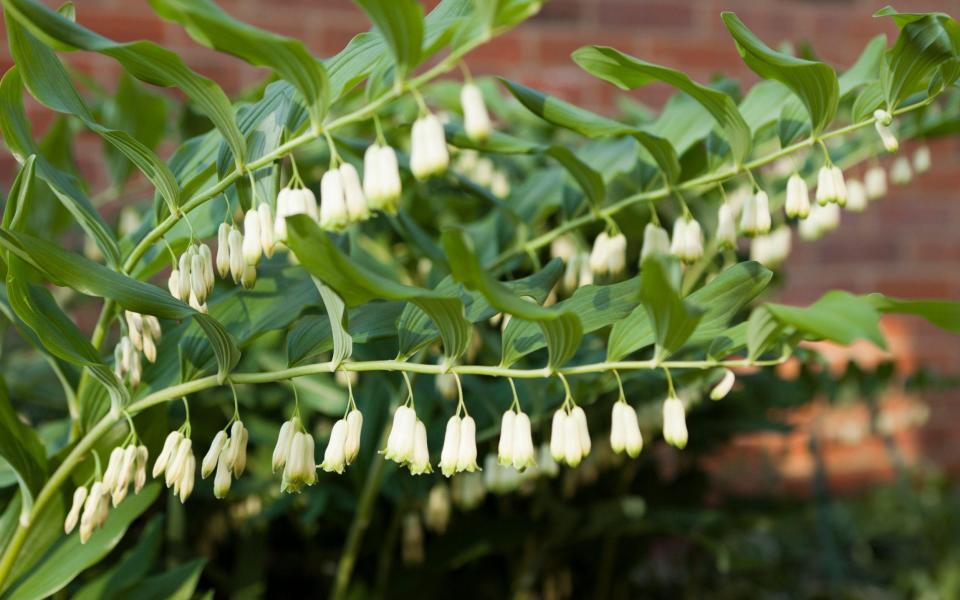
This handsome form of Solomon’s seal has arching stems, with pairs of leaves held above pendent green-tipped white bells. The double form is ‘Flore Pleno’, while ‘Betburg’ produces purple-brown young foliage, before greening up.
Hosta ‘Royal Standard’ AGM
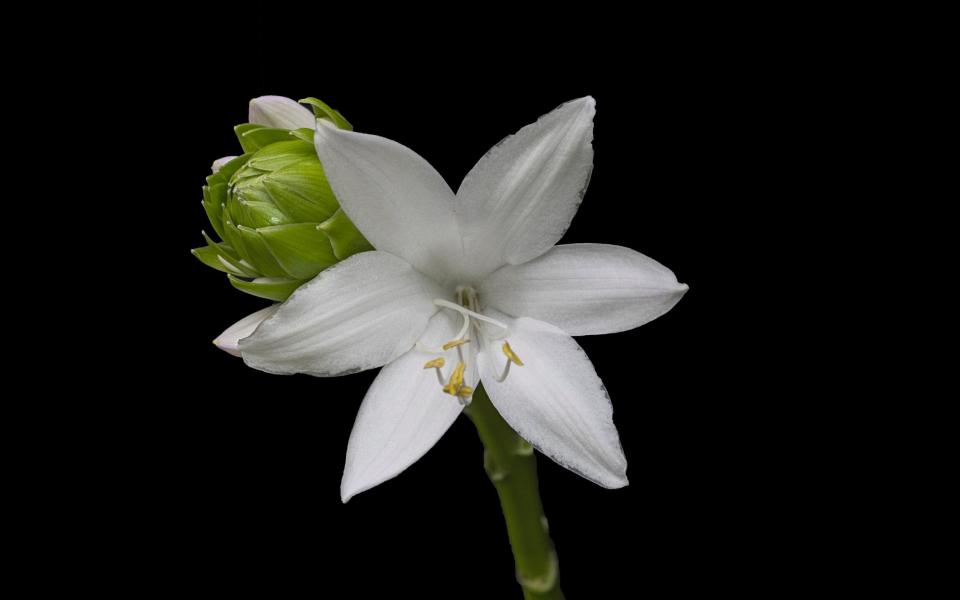
Choosing one hosta is tricky, but the glossy heart-shaped leaves are a lively colour. The fragrant white flowers appear between August and September. Ideal for moist soil and bright shade. It’s readily available, too.
Polypodium cambricum ‘Richard Kayse’ AGM
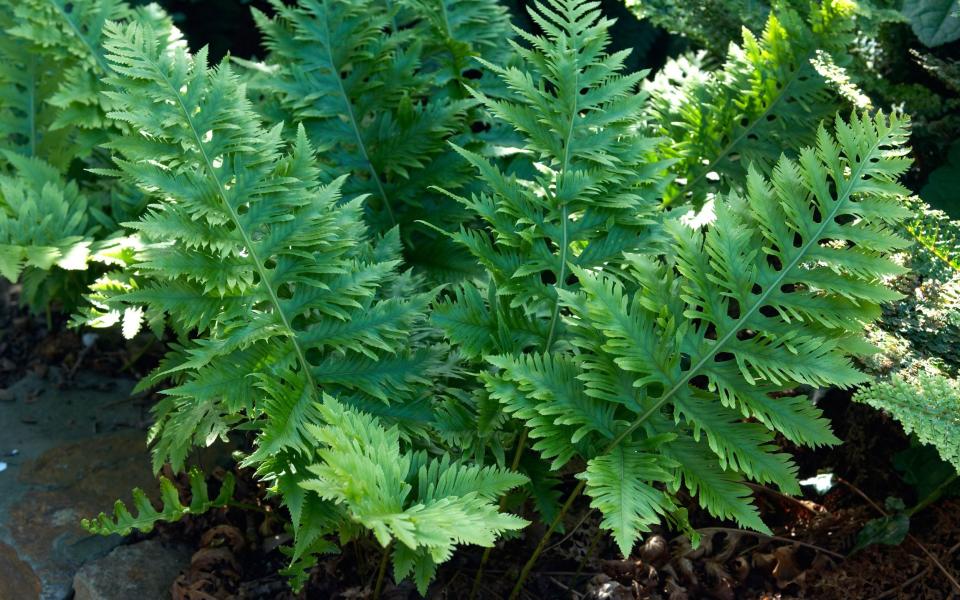
The best fern for winter foliage, with bright green fronds that resemble fir trees in silhouette. Summer dormant, so divide in autumn or leave to make clumps. ‘Cambricum’ and ‘Conwy’ are nearly as good.
Asplenium scolopendrium AGM

Wavy-edged hart’s tongue fern, with solid leaves. Adores deep shade that’s not too dry. The ‘Cristata’ form has crested tops to the foliage, but the Holy Grail is ‘Crispum Bolton’s Nobile’, for its extra-wide, wavy-edged fronds.
Adiantum venustum

This stunning hardy maidenhair fern has black-stemmed triangular fronds, with tiny leaves. It creeps along and, in warmer gardens, it’s evergreen. The Asiatic maidenhair fern Adiantum aleuticum subsp. aleuticum is upright, with a fan of narrow fronds.
Epimedium ‘Spine Tingler’ AGM

The leathery, crisply edged narrow leaves of this Chinese epimedium make a handsome and eye-catching feature in winter because the stems tremble in the slightest breeze (but the yellow flowers are boring). Light shade and good soil.
Touches of white
Paeonia emodi AGM

The graceful Himalayan peony, left, has divided foliage and swooning stems topped with white, single flowers studded with golden anthers. Thrives well in a frost-free position that’s not overly wet in winter.
Gillenia trifoliata

This American native is a toughie, with palmate foliage and wiry, rust-red stems. The dainty white flowers, encased in russet chalices, look really fragile. Beth Chatto likened them to “floating moths at dusk”. Needs space to spread out and cool soil in shade.
Rosa ‘Madame Alfred Carrière’ AGM

This very healthy, repeat-flowering climbing noisette rose has blush-white flowers with a hint of pink champagne. The smooth stems are pliable and easy to train, and it’s still the best rose for a north-facing wall.
Rosa ‘Sander’s White rambler’ AGM
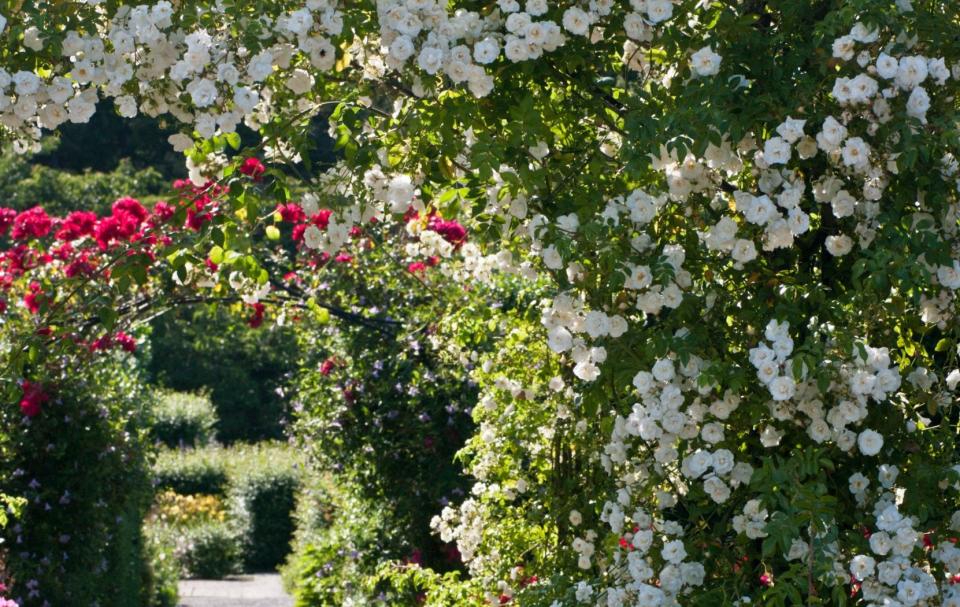
This well-behaved rambling rose begins to flower in July, later than most. The clusters of semi-double white flowers, each with a touch of egg-yolk yellow, are held above dark green foliage. It’s pliable and easily trained, but only flowers once.
Lamprocapnos spectabilis ‘Alba’

The white form of the showy pink and white bleeding heart performs in May. It emerges late, so mark the spot with a cluster of ‘Spring Green’ tulips – then stand back and admire the arching stems and pristine white flowers.
Anemone x hybrida ‘Honorine Jobert’ AGM
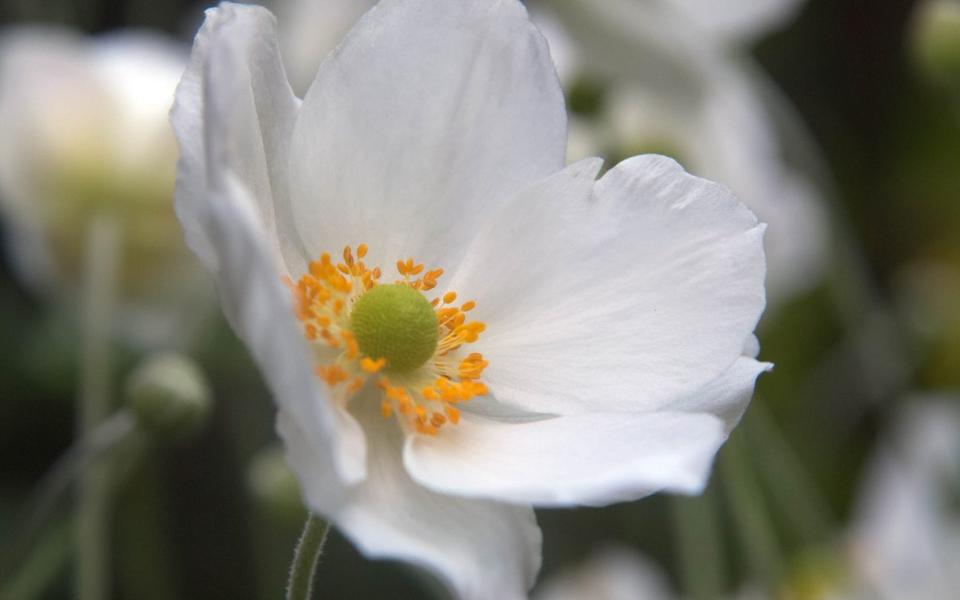
The classic single white Japanese anemone, complete with a green, pincushion eye and a ring of golden stamens. This elegant September-flowering perennial will creep into shade as the roots enjoy cool soil.
Aquilegia vulgaris ‘Munstead White’

A columbine with rounded green foliage and wide, green-tipped flowers. Derry Watkins’s Special Plants sells the seeds. It is a different plant from Aquilegia vulgaris ‘Nivea’, despite what the RHS says!
Astrantia major subsp. involucrata ‘Shaggy’
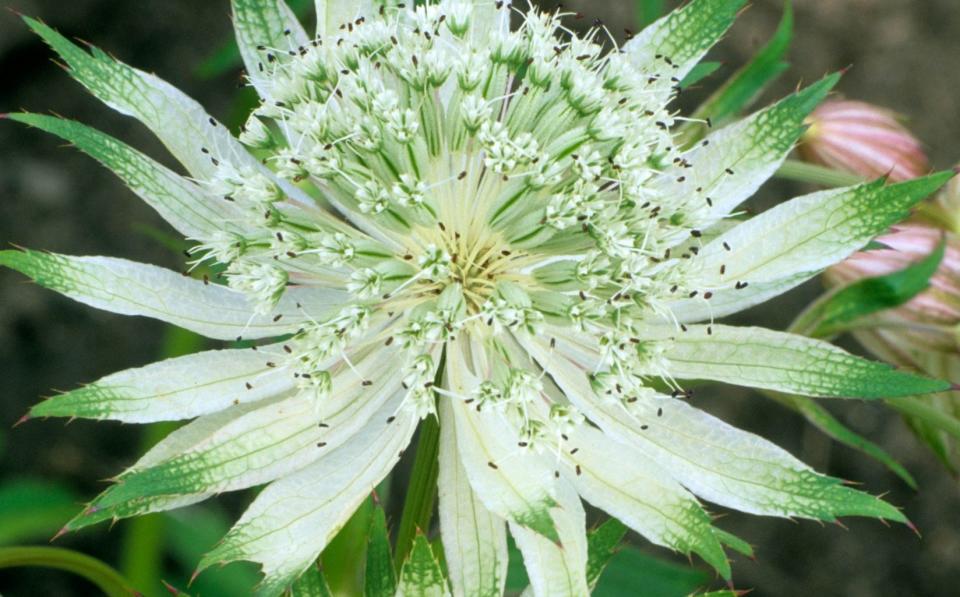
An enormous central flower with green-tipped white bracts, this slow-fuse plant is happiest in partial shade and good soil, as are most dark red and pale astrantias. Sun-loving exceptions are ‘Roma’ and ‘Buckland’.
Melica uniflora f. albida AGM

Imagine grains of rice, scattered after a white wedding, and you’ll conjure up this clump-forming, deciduous grass with its cascading heads of white beads. Perfect as an edging with ferns and very shade tolerant. Produces seedlings.
Viola cornuta ‘Alba’ AGM
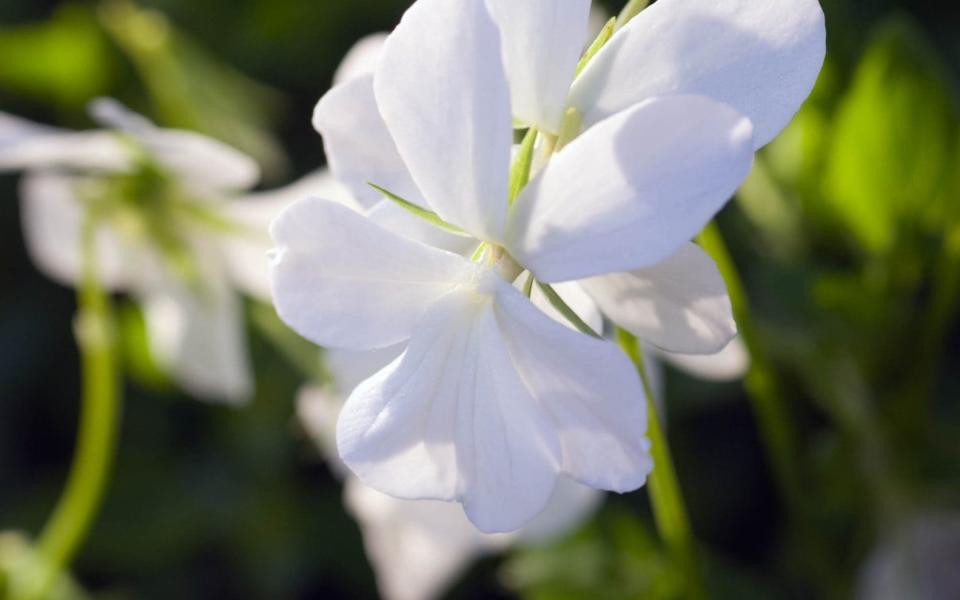
Don’t confuse the horned violet with a garden pansy. Perennial, but trim back in September for a cushion of foliage before winter. Bright green, crinkled foliage; wispy, white asymmetrical flowers creep up on long stems. Not for dry shade.
Bright sparks in the dark
Rosa rugosa ‘Roseraie de l’Hay’ or ‘Hansa’

Two near-identical roses, with cerise-pink blooms and matt green foliage. Easy to grow and shade-tolerant with three hours or so of light. ‘Hansa’ produces hips.
Lunaria rediviva
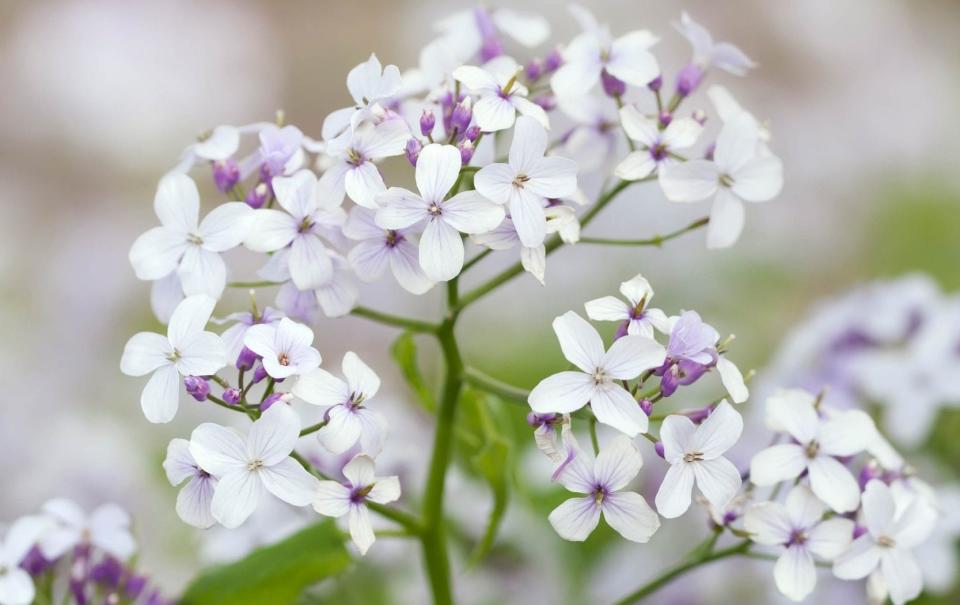
More like a giant lady’s smock than honesty, with silver-mauve domes of flowers on this erect perennial. Heart-shaped green foliage and elliptical seed heads add charm.
Euphorbia griffithii ‘Dixter’
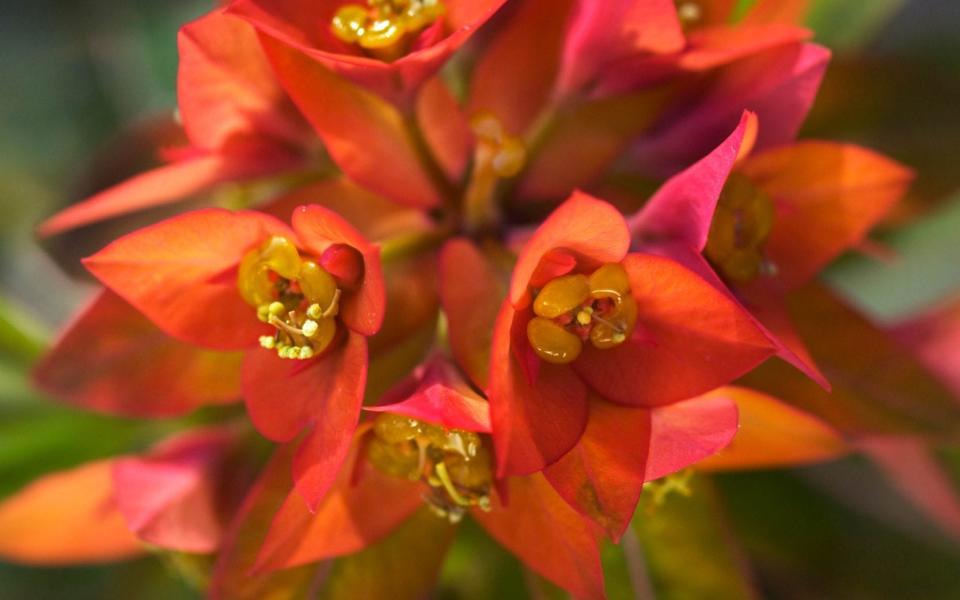
Olive-green foliage and dark stems crowned with fiery orange bracts in early May. It creeps about, but will stay in shade and is perfect with tulips. Best in good soil.
Euphorbia epithymoides
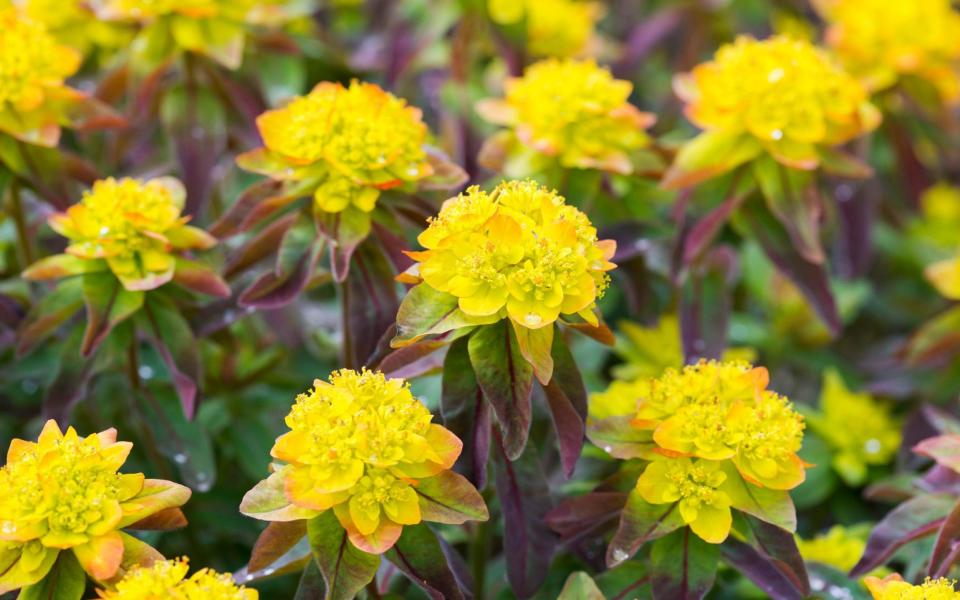
A foot-high mound of acid yellow heads appears just in time to support blue scillas and bluebells. Cut back to base in June or July. Beware the irritating milky sap!
Geum ‘Bell Bank’
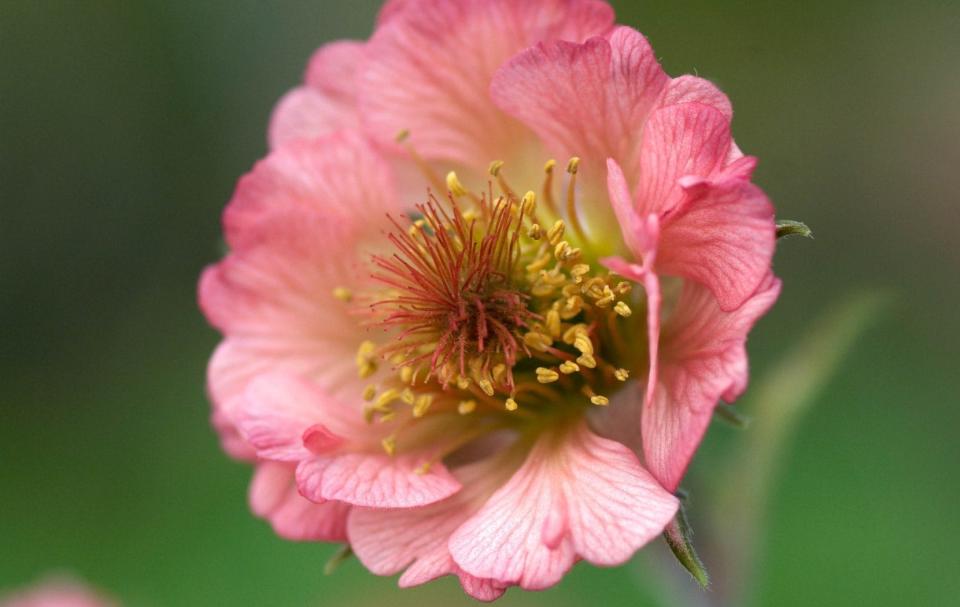
Geums with gently nodding heads and pallid, frilly edged flowers do well in moistish shade. ‘Bell Bank’ was found in the late Geoffrey Smith’s garden close to the stream, and it won’t self-seed.
Smyrnium perfoliatum

Said to be a triennial, a plant that germinates in one year, produces a rosette in the second and flowers in the third. Upright and stately, with acid-yellow leaves and airy limelight umbels.
Euphorbia amygdaloides ‘Purpurea’

This evergreen form of our native wood spurge has beetroot-tinted foliage and lime-green bracts. Not long-lived, but very good in deep shade. Trim back hard after flowering.
Iris x robusta ‘Dark Aura’ AGM

Near-black stems rise above narrow green foliage that’s purple at the base, and then slender royal blue irises unfurl in late May. The arching foliage echoes the gentle curve of the falls. A wilding of quality.
Pulmonaria ‘Opal’ AGM

This seedling, found in a dry garden in Yorkshire, is one of the best lungworts – and there are many. It makes a mound of lightly spotted foliage, and the flowers open pale pink and then turn a cool, grey-blue. Endures well.
Tulipa sprengeri AGM

This jewel-like Turkish tulip, the latest to flower, has medium-sized red flowers that look gilded from afar. It spreads by self-seeding, so don’t dead-head. Happy in shade and the flowers last longer.
Glimmers of yellow
Hydrangea paniculata ‘Limelight’ AGM
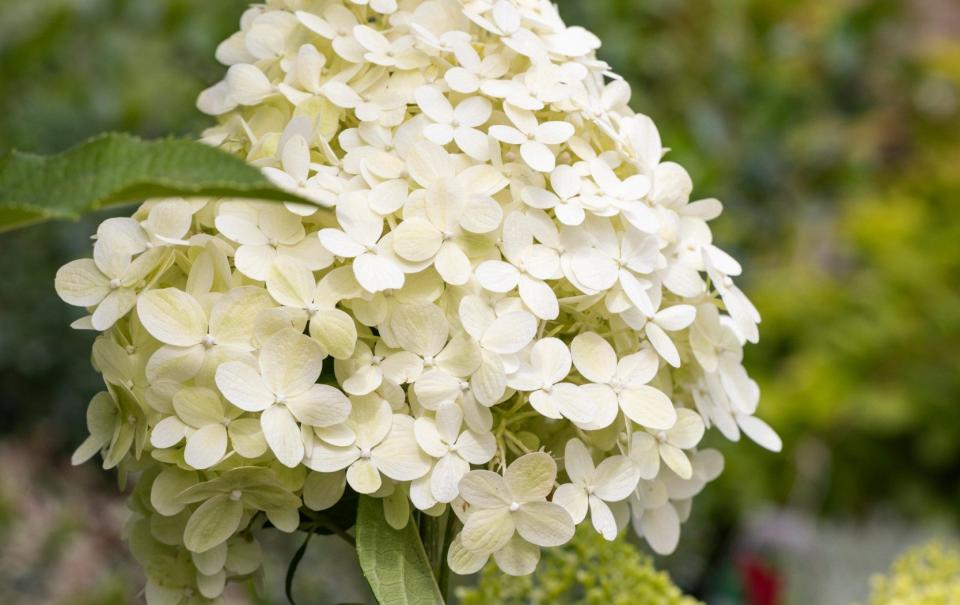
Conical green heads appear in August before paling to white then pink. Reliable under deciduous trees. ‘Kyushu’ is a daintier white.
Milium effusum ‘Aureum’ AGM
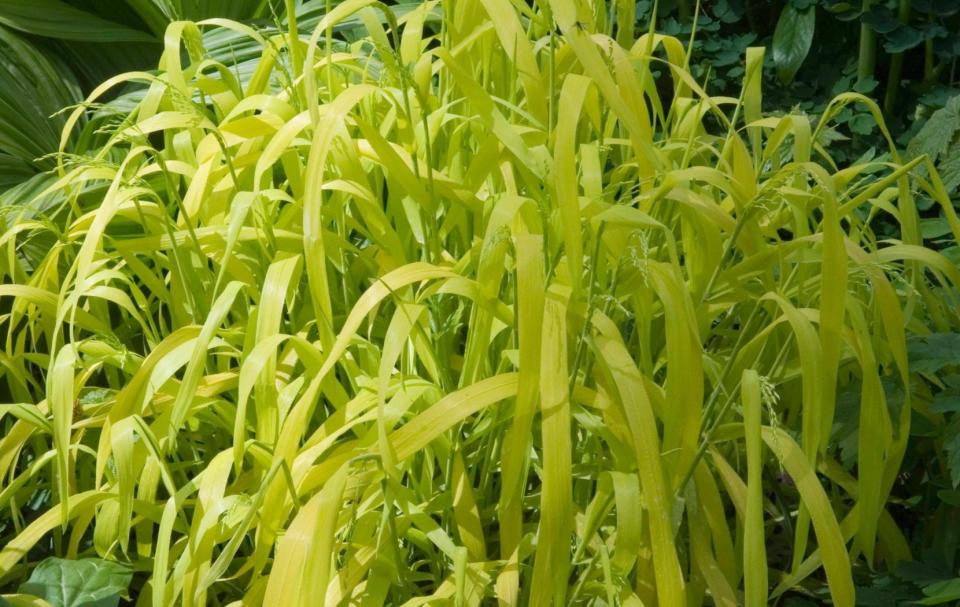
Bowles’s golden grass self-seeds (enthusiastically), in deep shade. In winter the foliage keeps its chartreuse colour and, by spring, wands of grassy heads open to a fine veil. Cull after flowering by tugging it out.
Mahonia x media ‘Winter Sun’ AGM
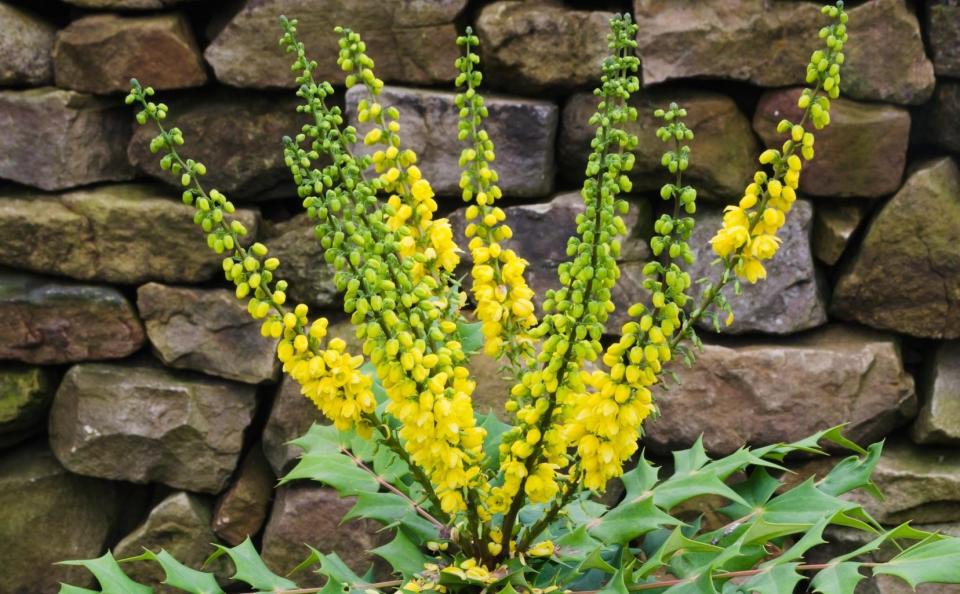
Produces scented pallid yellow flowers in November when nothing else flowers, framed by evergreen, spiny pinnate leaves. Performs in deep shade.
Dryopteris wallichiana ‘Jurassic Gold’
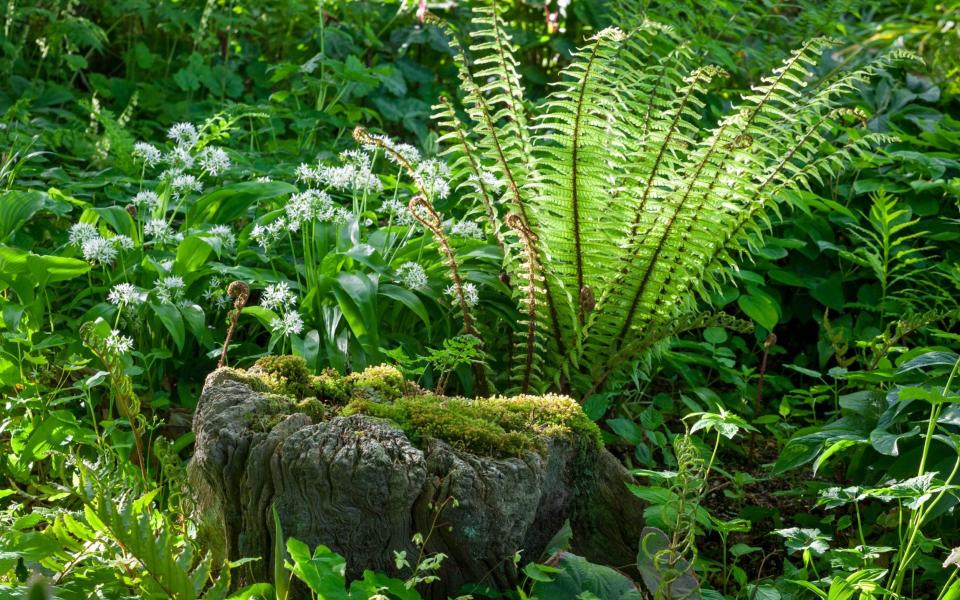
The golden form of this Himalayan fern offers new growth that is orange-yellow and sets off the black stems. Needs good, humus-rich soil and shade.
Hamamelis x intermedia 'Pallida’ AGM
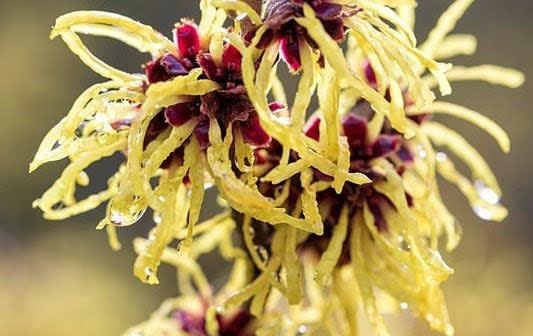
Acid-yellow spidery flowers creep up bare stems in January. The freesia scent is exceptional, so do sniff before you buy. Good soil and a woodland edge.
Top tips for roses in shade
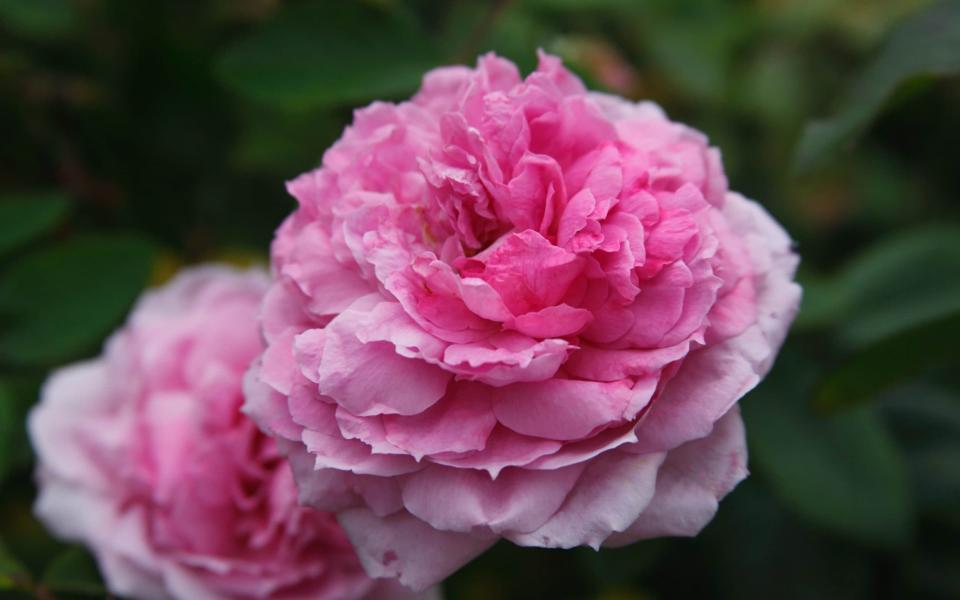
If you have a shady area that gets four or five hours of sunlight during the height of summer, you can grow roses as long as you choose carefully. Trevor White Roses has a section of shade-loving climbers and roses.
Give roses reasonable soil and an open position away from overhanging branches.
Go for upright roses with stiff stems, because growing them in partial shade makes stems laxer. Prune them harder when they’re dormant to keep the stems strong.
Avoid Hybrid Teas: they’re more demanding. Go for cluster-forming roses with semi-double or single flowers.
Paler colours are generally more effective in shade. Good pinks include David Austin’s mid-pink The Mayflower, above, and rich-pink Princess Anne. His sunset-hued The Lark Ascending is another rose that will perform in some shade.
How to have success with ferns
Ferns look wonderful in shade. I prefer to start with small plants and let them grow in situ. Keep ferns well watered in their first season.
In dry shade, opt for native dryopteris such as Dryopteris dilatata ‘Crispa Whiteside’ AGM or Dryopteris filix-mas ‘Crispa Cristata’ AGM. Both are interesting to look at and easy to grow.
In shade, opt for wintergreen ferns that keep their leaves for most or all of winter. They need less moisture. Polypodiums are excellent and they spread by their many feet – or “poly podies”.
In moist shade close to water, you’ll be able to grow handsome deciduous ferns such as the royal fern Osmunda regalis.


